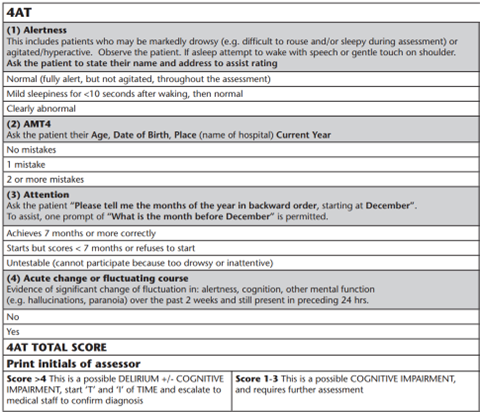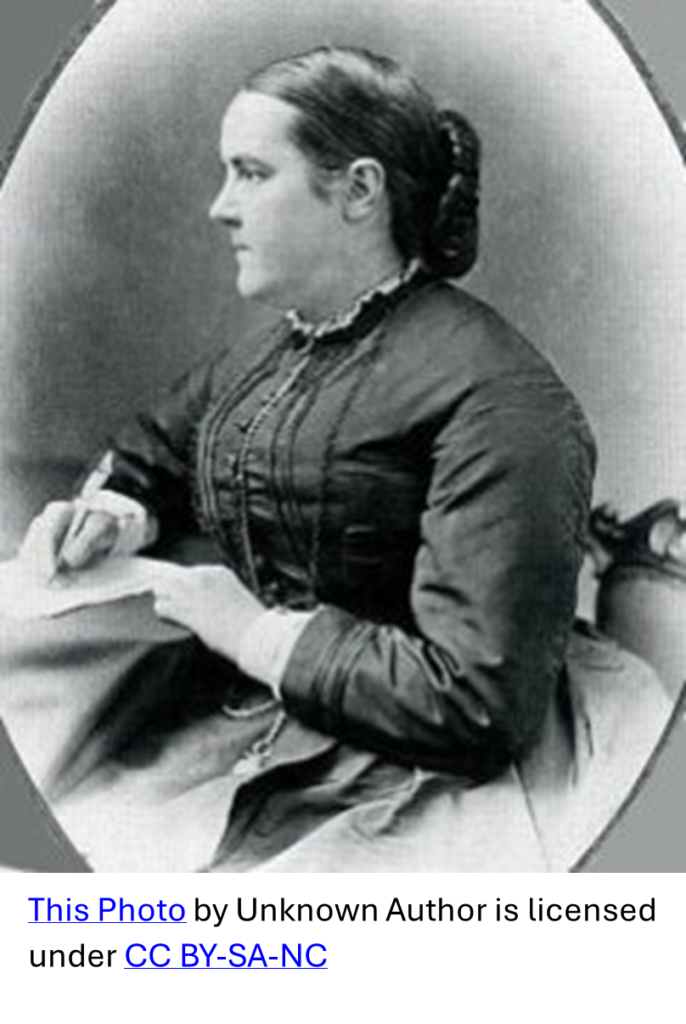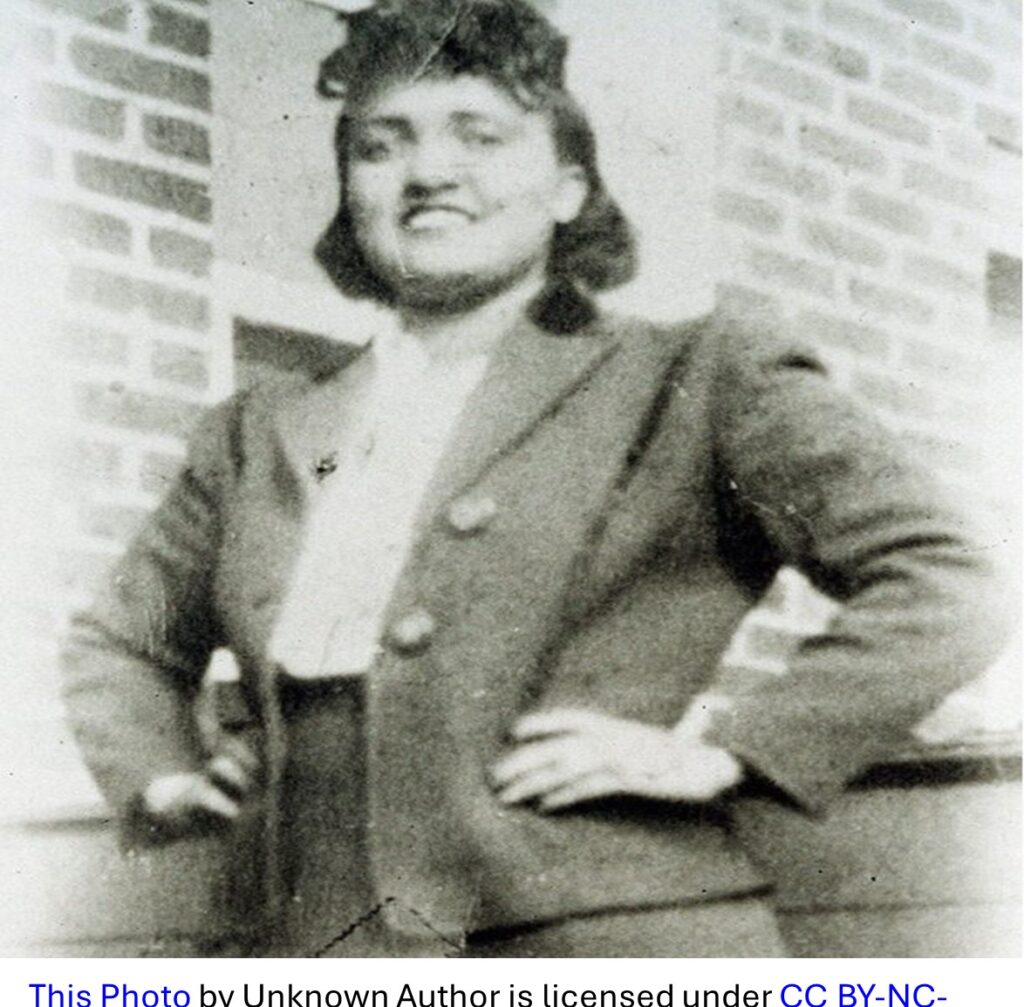Archives for March 2024
The 4 D’s of Delirium – for Prosthetists and Orthotists and their teams
Danger of Delirium
Delirium is among the most common of medical emergencies. It can occur in around 20% of adult acute general medical patients as well as:-
- In up to 50% of those who have a hip fracture.
- In up to 75% of those in intensive care.
Having dementia increases the risk of delirium. Other risk factors include: being aged 65 years or older, frailty, multiple illness, being male, have a history of depression, misuse of alcohol and experiencing sight or hearing loss.
Definition of Delirium and presentation
Delirium is defined as “an acute deterioration in mental functioning arising over hours or days that is triggered mainly by acute medical illness, surgery, trauma, or drugs” (SIGN 157). It may present as a state of sudden confusion or drowsiness that can happen when someone is unwell.
Delirium can be upsetting and frightening for the person experiencing it and for those around them. For this reason, it is really important that as many people as possible know about delirium so they can understand what’s happening and seek help as soon as delirium is suspected. The experience of delirium will be different for everyone but these are few examples:
| Feeling suspicious of others Being irritable, anxious or frightened Finding it hard to sit still Feeling agitated and restless Seeing things that aren’t there. | Not knowing where you are or why Being unable to keep up with conversations Feeling incredibly drowsy and slow Wanting to sleep all the time Showing no interest in eating or drinking |
Because of the many different ways delirium can present itself, it is often the people who know the person best who are first to notice. This is especially the case for people living with dementia, where subtle changes in a person’s activity levels or personality can provide valuable early warning signs (Delirium Part 2 below for further information).
Detecting Delirium
The “SQiD” or Single Question in Delirium is a simple but highly effective way of helping to detect delirium. Anyone can ask the SQiD and it can be used at home, in hospital or in a care home setting. Any time a person at risk of delirium is unwell:
SQiD = “Is the person more confused or drowsy today?”
If the answer is yes, it’s important to alert the persons GP or medical team that it might be delirium.
The 4AT tool is used to identify patients with probable delirium in emergency departments and acute hospital settings. Being aware of it, when visiting ward patients can be really useful.

DO to Decrease the risk of Delirium by preventing complications.
- Discuss how a Prosthesis or Orthosis could facilitate early mobilisation and reduce falls.
- Discuss how P & O interventions could reduce or manage pain.
- Discuss how P & O interventions could reduce the risk of pressure sores in tandem with increasing activity, which may help promote good hydration along with relevant nourishment.
- Consider how your communication may be less effective if the person you are treating doesn’t have their glasses or hearing aids on. Not feeling comfortable or in control of the environment could lead to feelings of isolation, which should be reduced where possible.
- Consider providing education to Carers, relatives and others on the four D’s of Delirium as you go about your daily routine
Information developed from:
Sign Guideline SIGN 157, March 2019 ISBN 978 1 909103 68 9
https://www.sign.ac.uk/our-guidelines/risk-reduction-and-management-of-delirium/
Blogs by Christine Steel, AHP Dementia Consultant, NHS Greater Glasgow and Clyde.
Introducing Dr Nicky Eddison, the new BAPO Chair
“I am honoured and proud to take over as the Chair of BAPO. I am eager to work collaboratively with all of you to further the shared goals and objectives of our professional body.
First, I would like to thank my predecessor Peter Iliff for the time and effort he has committed to the role over the last three years. I am committed to building upon the foundation that has been laid and guiding our organisation to further success.
I believe in the strength of our collective efforts and the importance of a diverse and inclusive culture. Together, we will navigate challenges, seize opportunities, raise the profile of prosthetics and orthotics, and continue to make a positive impact on patient care.
In the coming months, I look forward to engaging with you to better understand your perspectives and aspirations, and how we can work together to achieve our shared goals. Open communication and transparency will be paramount as we move forward.
Our organisation’s success hinges on the passion and commitment of its members, our dedicated staff, and volunteers. I am confident that by working together we will achieve our goals and reach our full potential.
Thank you for your support, and I am excited about the journey ahead.”
Dr Nicky Eddison received her PhD in biomechanical optimisation of ankle-foot orthoses and footwear combinations in 2018 from Staffordshire University and currently holds the position of Association Professor at the Centre for Biomechanics and Rehabilitation Technologies at Staffordshire University. In addition, Nicky is a consultant orthotist and service manager at the Royal Wolverhampton NHS Trust.
Nicky has a portfolio of peer-reviewed publications, achieving impact within the orthotics profession both nationally and internationally and across the wider healthcare domain of Allied Health Professions. Her research interests include biomechanical optimisation, prescription footwear, gait analysis, digitalisation in healthcare, and health inequalities.
Assets from BAPO’s Workforce Reform Projects

BAPO is proud to launch a suite of profession-specific documents, guidelines, and frameworks from a 12-month programme of work funded by Health Education England, now part of NHS England Workforce Training and Education.
The programme of work covered a wide range of projects including pre-registration curriculum, leadership, preceptorship, support workers, practice-based learning, advanced practice, early career support, access to jobs for new graduates, case studies, and career development.
BAPO_Workforce_Mapping Document
BAPO Access to jobs for newly qualified prosthetists and orthotists
BAPO Advanced Practice in Prosthetics and Orthotics-Updated July 2024
BAPO Careers Development Framework for Prosthetists and Orthotists
BAPO Curriculum Guidance for the pre-registration education of prosthetists and orthotists
BAPO Early career guidance framework for prosthetics and orthotics
BAPO Jonathan Edgar Case Study Clinical Support Technician
BAPO National PO Practice Based Learning Framework
BAPO Provision of early career support to prosthetists and orthotists
BAPO Russell Salt Case Study Apprentice
BAPO Support worker framework for the prosthetic and orthotic workforce
The following are available as presentations:
BAPO Introduction to gait for support workers
BAPO Introduction to lower limb orthoses for support workers
BAPO Introduction to lower limb prosthetics for support workers
BAPO Introduction to upper limb orthoses for support workers
BAPO Introduction to upper limb prosthetics for support workers
BAPO Practice-Based Learning Framework
Please contact enquiries@bapo.com if you would like a copy of the presentation slides with voiceover.
International Women’s Day

Image from the national women’s history alliance
The National Women’s History Alliance has designated the International Women’s Day 2024 theme as a celebration of “Women Who Advocate for Equity, Diversity and Inclusion.” This theme recognises women who understand the need to eliminate bias and discrimination from individuals’ lives and institutions.

Notable women throughout history include Rosa Parks who helped initiate the civil rights movement in the United States. “You must never be fearful about what you are doing when it is right.” – Rosa Parks (1913-2005), civil rights activist.
Shirley Chisholm was the first black woman to hold a position in the United States Congress in 1968. “If they don’t give you a seat at the table, bring in a folding chair.” – Shirley Chisholm 1924-2005


In the mid-19th century, Sophia Jex-Blake was unable to earn her medical degree due to barriers in the system that discriminated against her gender. To overcome this, she established her own school of medicine. Founded in 1874, the London School of Medicine for Women was the first and only place a woman could earn a medical degree in the UK for many years. Between 1874-1911, the number of women doctors in the country increased from 2-495. She also established a hospital in Edinburgh providing women doctors with jobs and women patients with high-quality care for 80 years.

Henrietta Lacks was a Black woman whose cancer cells were taken without her consent. These cells are the source of the Hela cell line, one of the most important cell lines in medical research. In October 2021, Henrietta Lacks was recognised by the WHO, “In honouring Henrietta Lacks, WHO acknowledges the importance of reckoning with past scientific injustices and advancing racial equity in health and science. It’s also an opportunity to recognise women – particularly women of colour – who have made incredible but often unseen contributions to medical science.”
Henrietta Lacks | Source of HeLa cells taken without consent | New Scientist